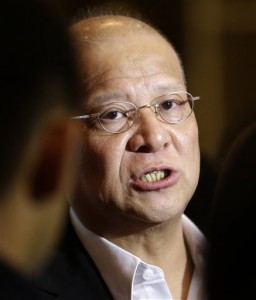PAL, Kith Meng of Cambodia sign deal to set up Cambodia Airlines
MANILA, Philippines—Flag carrier Philippine Airlines has struck a deal to help set up a new airline in Cambodia in partnership with local tycoon Okhna Kith Meng, hailed by many as the new face of Cambodian capitalism.
In a disclosure to the Philippine Stock Exchange on Thursday, conglomerate San Miguel Corp. said a joint venture with Kith Meng was formed to create Cambodia Airlines, in which PAL will hold a 49 percent interest. SMC in turn owns a significant stake in and exercises management control of PAL.
This marks a landmark initiative by a Philippine conglomerate to make an overseas investment in the highly competitive regional aviation sector. This deal also marks a bold attempt by PAL, Asia’s oldest commercial airline, to incubate a new airline in a new market that is among the least developed in the region but one which is enjoying a rapid pace of growth and seen on track to join the middle-income developing group in the next decade or so.
“Cambodia is SMC’s investment focus and the government of Prime Minister Hun Sen is good,” SMC president Ramon Ang said in a text message, when asked about the rationale for this investment.
Hun Sen is widely credited for bringing stability and economic growth to Cambodia since consolidating power in a 1997 coup. Apart from the restoration of peace and security after almost three decades of conflict, including the terrible rule of the Khmer Rouge (1975–1979) when it is estimated that about one-quarter of the population either perished or left the country, Cambodia has grown rapidly since opening up to the regional and global economy and benefited from large capital inflows, both in the form of official development assistance and private capital, based on a recent Asian Development Bank report.
Article continues after this advertisementAng, who is also chief executive officer of PAL, said the group had yet to finalize the budget for the fresh investment in Cambodia. Ang himself recently flew to Cambodia to seal this venture with Kith Meng, whose group controls leading television and telecommunications networks in Cambodia and also has interests in hotels, banking, insurance and education.
Article continues after this advertisementIndustry sources said PAL’s expansion in Cambodia would allow the flag carrier to better maximize its assets – in particular its capital-intensive fleet- by opening up new routes.
“SMC may become an IndoChina play,” said Jose Mari Lacson, head of research at local stock brokerage Campos Lanuza & Co.
While Cambodia is a small market to begin, “the main advantage is that it’s fast-growing and there is a lot of interest in that area these days,” according to Lacson.
After relegating the bulk of its domestic operations to affiliate Air Philippines—now operating as PAL Express, the Philippine flag carrier is banking on the expansion of its international operations to boost operations. However, the Center for Asia Pacific Aviation (CAPA), a research firm, said it has been facing headwinds in the form of stiff competition from other airlines both locally and overseas, especially from low-cost carriers (LCC).
“The group’s new focus entirely on the full-service end of the market could hinder its ability to expand internationally as LCCs have gradually been increasing their share of the Philippine international market,” CAPA said in a report published this week.
Citing data from the Civil Aeronautics Board, CAPA said PAL has already seen its share of the Philippine international passenger market slip from 27.5 percent in 2010 to 24.9 percent in 2011 and 23.6 percent in 2012. This, even though 58 percent of PAL’s seats were already reserved for international flights, CAPA said.
It added that Cebu Pacific, an LCC owned by the Gokongwei family, was already ahead of PAL in regional destinations. Cebu Pacific currently has a 28 percent share of seat capacity in the Philippines-Southeast Asia international market compared to 23 percent for the PAL Group.
Also nearly beating PAL in its home turf is Singapore Airlines, which also corners 23 percent of the Philippines-Southeast Asia market if the latter’s affiliates’ Tiger Airways and Silk Air are taken into account.
“With LCCs now accounting for over 50 percent of capacity within Southeast Asia, the PAL Group will struggle to grow in this market without a budget subsidiary,” CAPA said.
CAPA said PAL would be facing an even steeper climb if it were to expand operations in the Middle East and Europe—markets dominated by well-funded and state-backed Middle Eastern carriers.
“Competition in the Philippines-Europe market is intense, with Gulf carriers and other Asian carriers offering a large range of one-stop destinations throughout Europe,” CAPA said.
